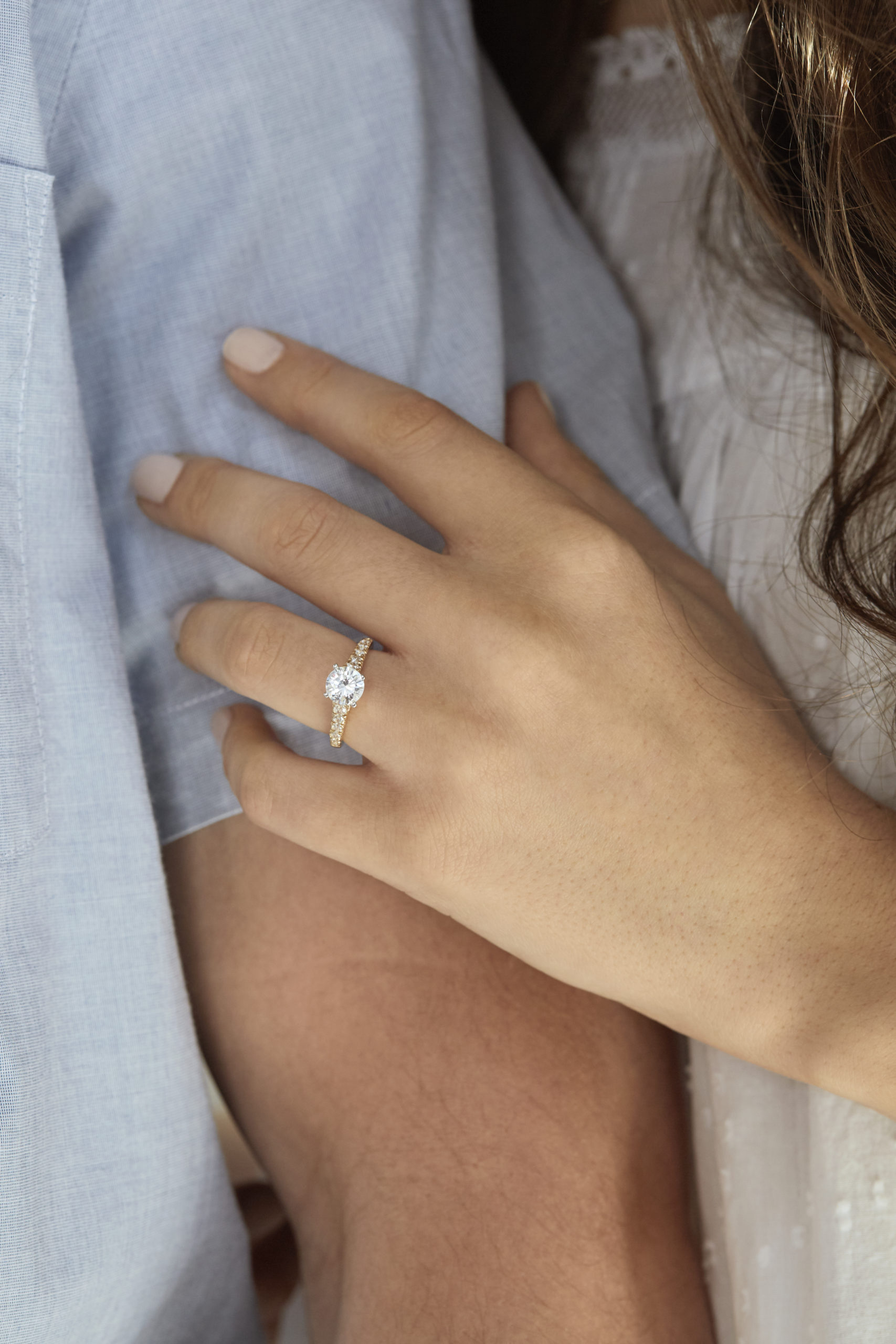If you’re in the market for a diamond, then you’ve likely come across mined diamond alternatives in your search. One of the most popular mined diamond alternatives, lab-grown diamonds, are somewhat shrouded in mystery! However, lab-grown diamonds offer an excellent real alternative for diamond buyers to make an informed decision regarding their next purchase. This guide will teach you everything you need to know about lab-grown diamonds. Let’s dive in!
Lab-grown Diamonds Overview
Lab-grown diamonds are created by using two different processes: High Pressure-High Temperature (HPHT) and Chemical Vapor Deposition (CVD). Though these processes differ, they operate under the same premise. Carbon is exposed to extreme heat and pressure, then it crystalizes to form a diamond. In short, the process which causes carbon to form diamonds in nature is mimicked in a lab setting to create diamonds that are completely identical to naturally-formed mined diamonds. Lab-grown diamonds are not “fake” diamonds, although this myth persists. These diamonds are distinct from common diamond alternatives such as cubic zirconia or moissanite.
Lab-grown diamonds are graded in gem labs, such as the Gemological Institute of America (GIA) and the International Gemological Institute (IGI). These gem labs evaluate lab-grown diamonds and provide grades that reflect the quality of their cut, clarity, and color. These diamonds are also weighed in carats. Each diamond that moves through these labs is certified and given an official grade.
There is no cut grading system for fancy-cut diamonds
, as there is not a universally accepted and used method of grading for these diamonds. That said, gem labs such as GIA are working to establish a cut grading method for fancy-cut diamonds. Additionally, as there is no universal standard in which diamonds are graded, a single diamond might get a different grade from various labs. Jewelers decide which gem lab they will use to grade their diamonds, so it’s important to discuss grading and certification with your jeweler before making a final decision.

Lab-grown vs. Mined Diamonds
Many potential diamond buyers hold misconceptions about lab-grown diamonds. This can be attributed to their relative newness, as well as marketing under the name synthetic diamonds. However, as lab-grown diamonds increase in popularity, more buyers have learned that the only difference between
lab-grown vs. mined diamonds is how they are created.
Lab-grown and mined diamonds are optically, chemically, and physically identical. While mined diamonds are created as a result of natural processes that occur deep within the earth, lab-grown diamonds mimic this process in a lab setting. So, when it comes down to it, the only difference between lab-grown and mined diamonds are their origins.

Benefits of Lab-grown Diamonds
Though mined diamonds and lab-grown diamonds are real diamonds, there are some significant advantages to choosing to purchase man-made diamonds. Here’s a breakdown of the benefits of lab-grown diamonds that every buyer should know.
- Ethically-Sourced: In direct contrast to mined diamonds, lab-grown diamonds aren’t subject to unethical mining processes. Diamond miners are injured at a rate of 1 injury per 1,000 workers annually. Moreover, some unethical diamond mining provides funding to war conflicts. There is no need to worry about these issues, you won’t find a so-called lab-grown “blood diamond.”
- Environmentally-friendly: Lab-grown diamonds are created in a lab setting that generally produces less mineral waste and land disturbance than mined diamonds. In fact, mined diamonds result in 100 square feet of land disturbance and 3 tons of mineral waste per a single carat of a mined diamond.
- Less-Expensive: Carat-for-carat, lab-grown diamonds are significantly less expensive than their mined counterparts. You can expect to save up to 40% on lab-grown diamonds compared to mined diamond prices.

Conclusion
Whether you prefer a lab-grown or mined diamond is entirely up to you, as each option has its merits. If you are interested in owning a diamond with over a billion years of history behind it, then a mined diamond will suit your fancy. However, if you are committed to finding an ethically sourced and environmentally-friendly alternative, lab-grown diamonds are the way to go.
This sponsored content was provided by Clean Origin.
Keep up with all of Green Living‘s content online and on social media.





